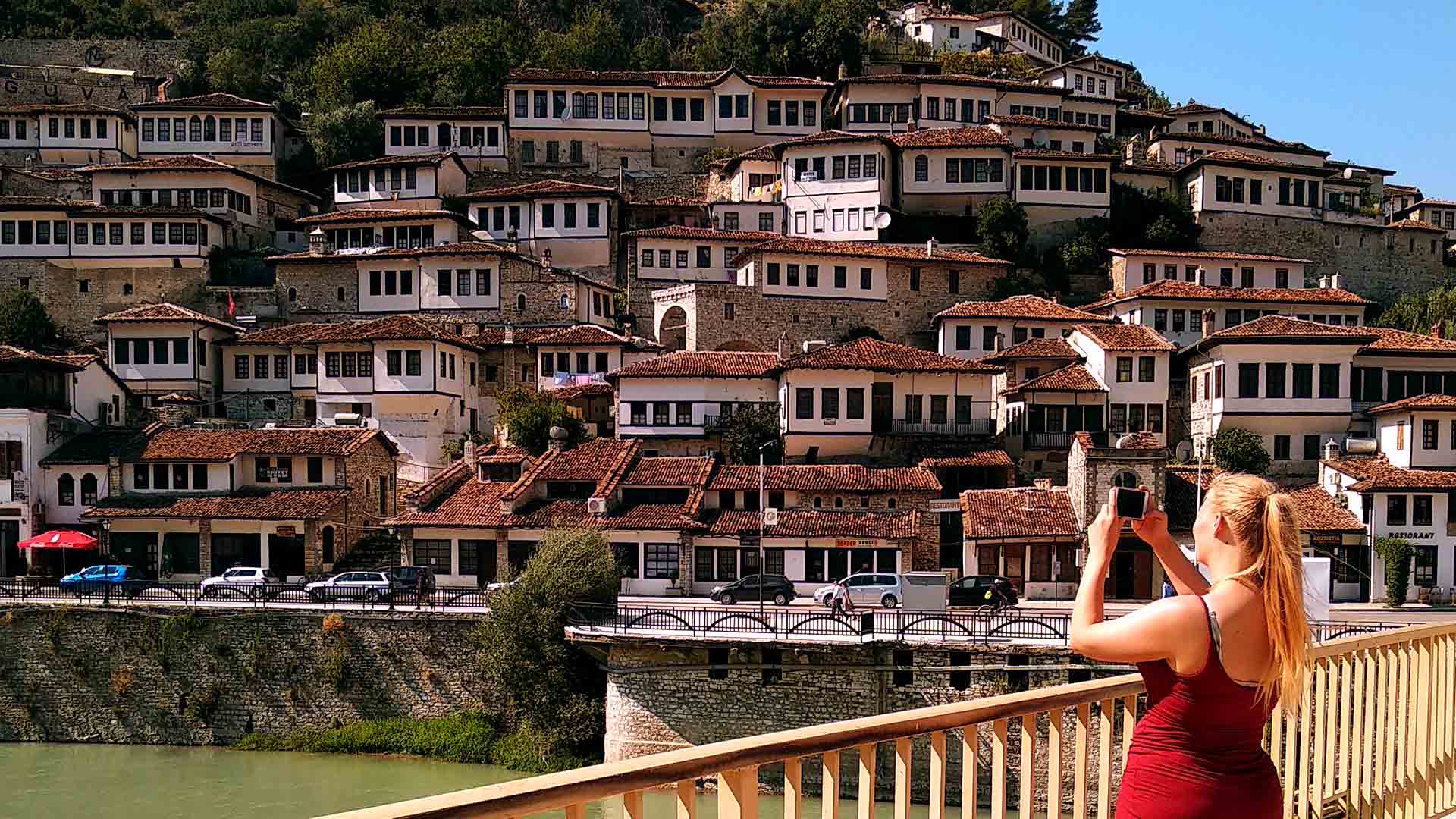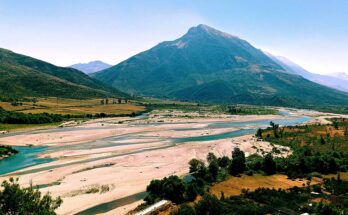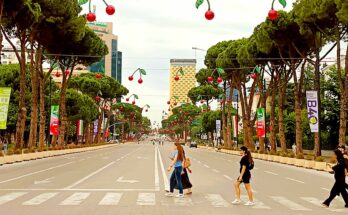One of the highlights of traveling to Albania is undoubtedly Berat, which has its own unique enchantment. It was given the nickname “town of a thousand windows” for its cluster of white Ottoman buildings that climbed the slope to its fortress. When the clouds break up to reveal Mt. Tomorri’s snowy summit or swirl over the tops of the minarets, the location’s harsh mountain backdrop is very moving. Despite being a significant tourism hub in Albania today, Berat has maintained its laid-back appeal and welcoming ambiance.
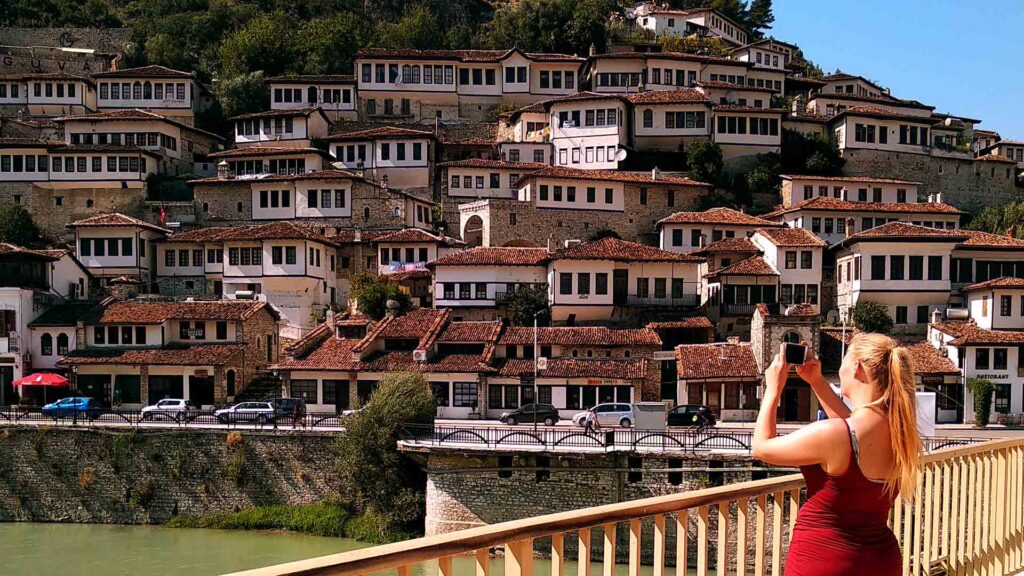
BC
Berat has been a site of human activity since prehistory. Two stone hammers that were discovered adjacent to the castle walls and date to the end of the Copper Age and the beginning of the Iron Age are the oldest signs of this activity (2600-1800 B.C). The location underwent a transformation throughout time, becoming an urban center around the middle of the 4th century BC. The old city’s perimeter walls, which cover a 9.6 hectare area, date to the middle of the 4th century BC.
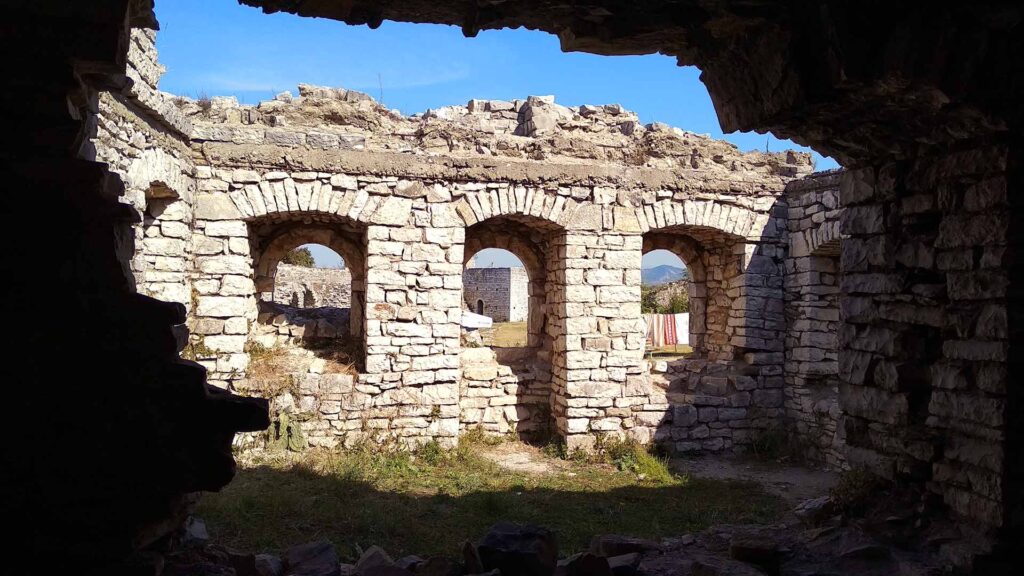
The city is mentioned once more during the second Illyrian-Roman war of 219-218 BC. Describing the ensuing events of 200 BC, Titus Livy, the great Roman historian, mentions the sack of the city by the Romans and the ferocity of the Roman Consul who “killed all the inhabitants over 16 years old and set the city on fire.” The city is mentioned again in the notes that Caesar kept during the war against Pompey in 48 B.C. He marched up the Osum River to the area that is now the current town of Dimal in an effort to outflank Pompey’s soldiers that were stationed along the left bank of the River Genius (Shkumbin River). When Caesar arrived, he immediately forced the Parthian capital to submit after sending a portion of his army to do so. This Parthian capital was for sure the city of Partha, the nowadays Berat.
Even current Albanian, which is thought to be a descendant of old Illyrian, may be used to explain the Illyrian name Partha. It might be interpreted as “white city.” The limestone construction of the fortress may have inspired the city’s name. Not much is known of the Roman assault on the city, but judging from the archaeological findings it looks like the city recovered soon after the invasion.
AD
The city’s importance steadily increased during late antiquity, catching up to that of the other nearby sites. The city of Pulcheriopolis, which appears in Hieroclites’ itinerary of 553, is assumed to have gotten its name from Pulcheria, the emperor Theodosius II’s sister from 450–453. This name translates to “rich, magnificent, and strong.”
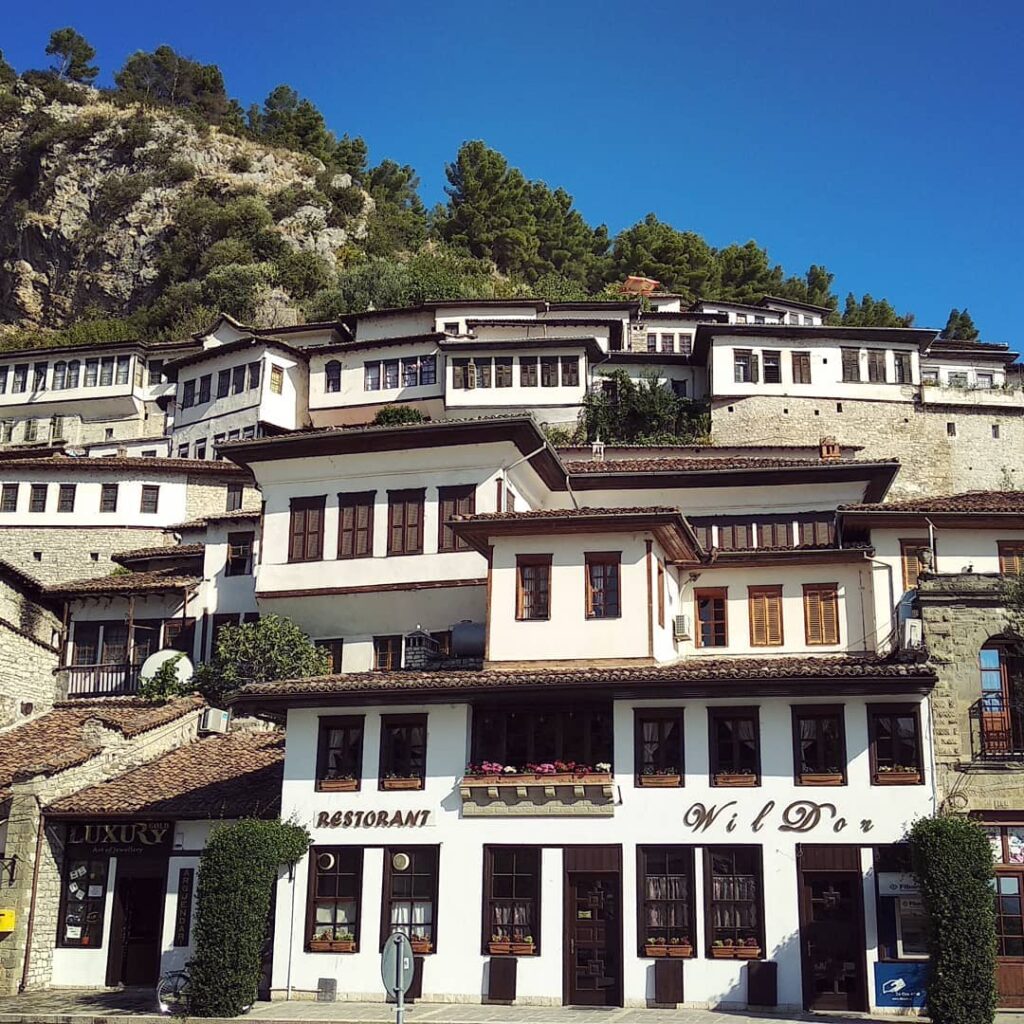
To be continued… Please come back shortly for the update.
